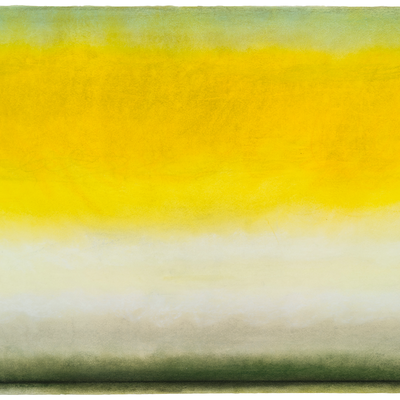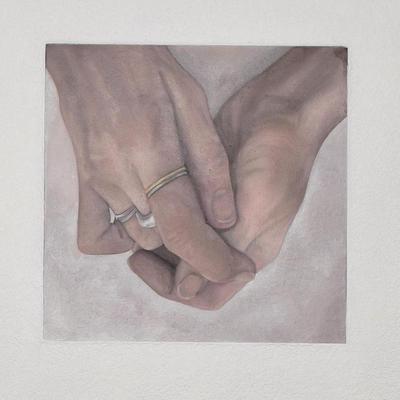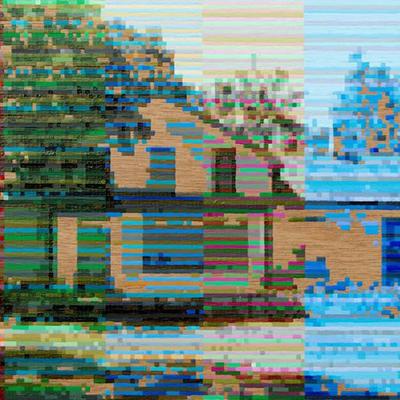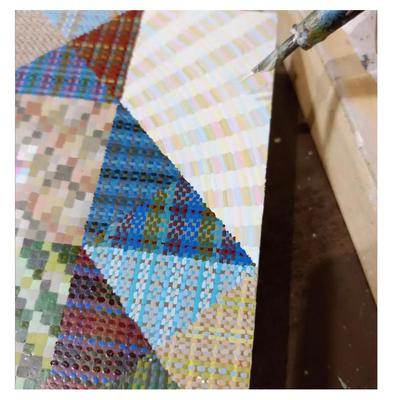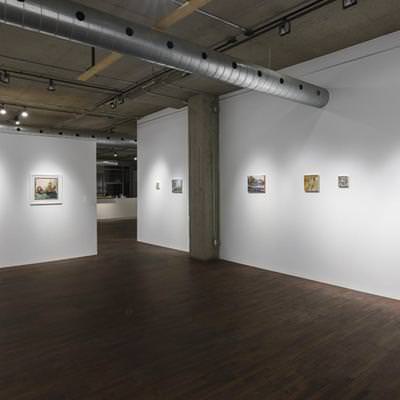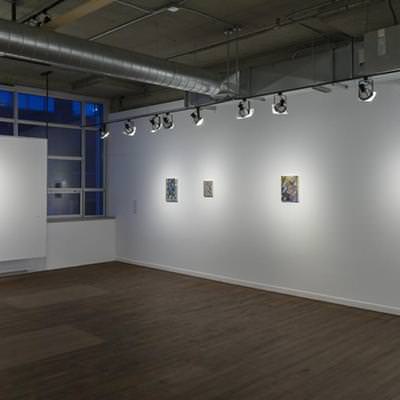In the work of Mark Stebbins, the pictorial surface—painstakingly fashioned at the intersection of craft traditions and digital technologies—is a territory to be explored. For more than a decade, the artist has been developing a unique practice marked by patience, precision, and discipline, as well as a keen sensitivity to the contemporary tensions between order and chaos, structure and error. The folk art of Ontario has influenced Stebbins’ approach. Inspired by embroideries and miniature mosaics, his works are the result of meticulously juxtaposed dabs of colour.
Each of his works, comprising dots or short strokes that are painted by hand, evokes both traditional woven textiles and the resolution of modern digital images. The viewer’s gaze alternates between the contemplation and the strangeness of the detail. By superimposing thousands of squares, lines and dots according to a process akin to weaving, Stebbins transmutes painting into a liminal space.
Speaking about his works on burlap, the artist notes that “by applying big blobs of acrylic paint, I create the look of a crocheted rug or finely woven fabric viewed in close-up. The colours and patterns used are inspired by traditional Ontario quilts (as in, for example, Hit and Miss), while at the same time reference geometric painting and bitmapped graphics. Seen in person, they have an intriguing texture that plays with light and shadow.” The exhibition Echo Choir features a group of the artist’s recent works focused on the notions of repetition and visual echoes, implicitly revealing a subtle meditation on the persistence of individual and collective memory. In a world saturated with ephemeral images, Mark Stebbins’ work asks us to slow down and pay closer attention. It reminds us that in the accumulation of scraps, in the repetition of actions, and even in its very flaws can emerge a kind of beauty—fragile, yet enduring—in an image in the process of being made and unmade.
